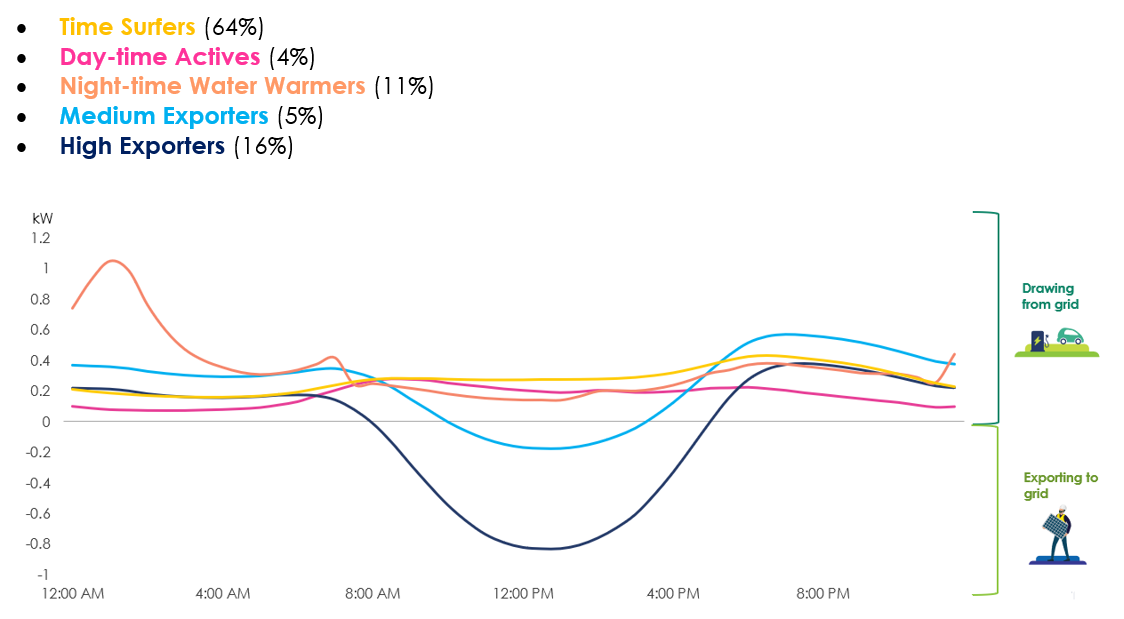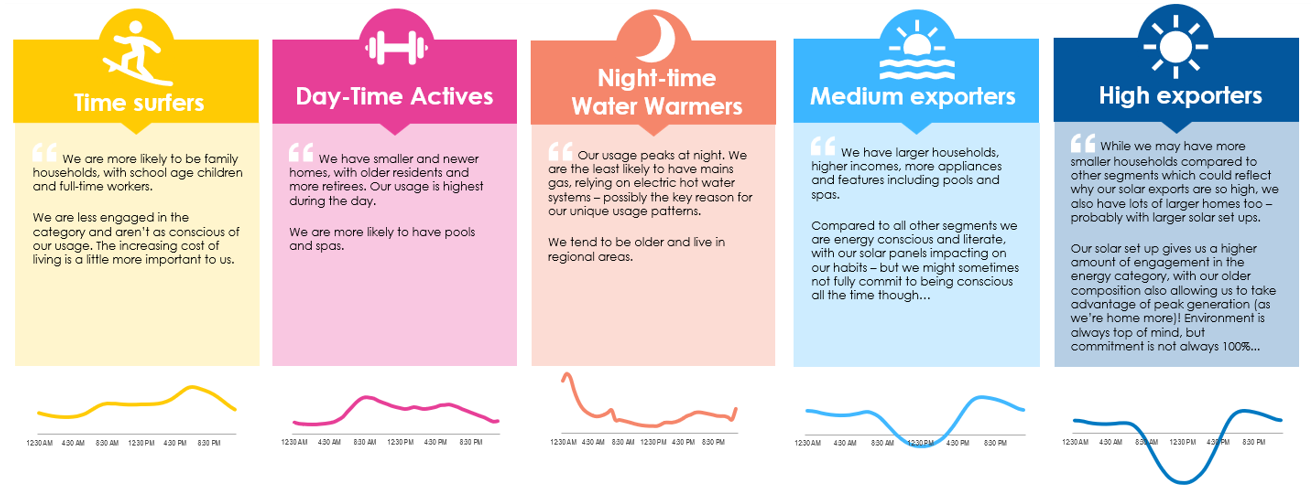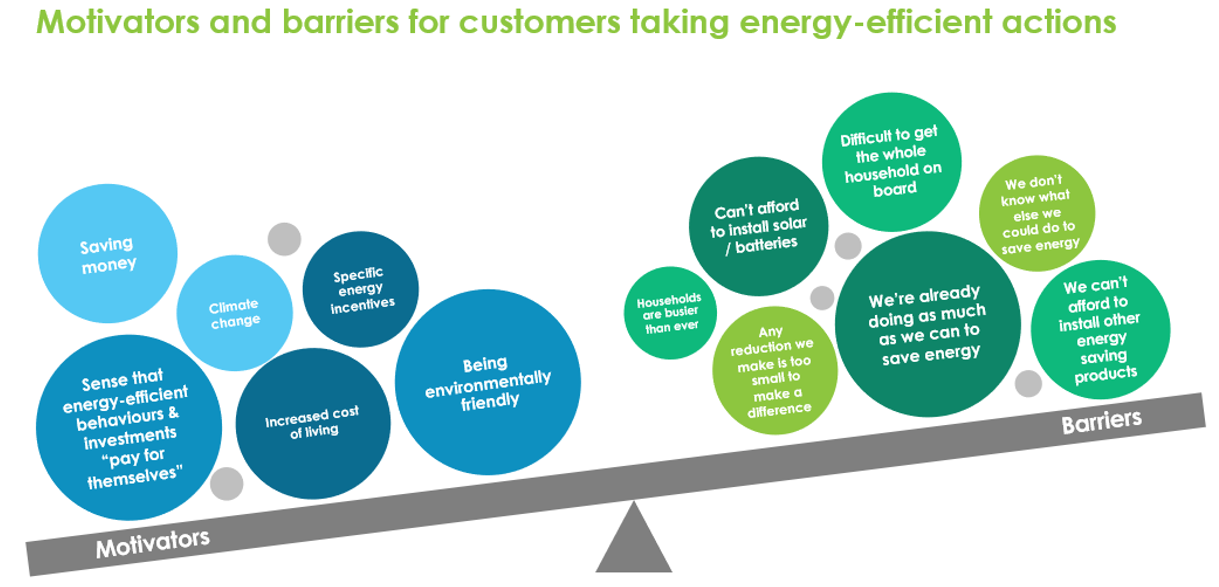Overview
- AusNet conducted a major study to better understand how different households use electricity.
- The goal was to group customers into segments based on their energy usage patterns (October 2021 – September 2022), household characteristics, and attitudes toward energy efficiency.
- This helps AusNet plan better services and support for all customers.
- Combined residential customer attitude surveys with smart meter data.
Methodology
- Analysing data from 680k+ residential meters to identify segments.
- Building out segments via data analysis and online survey of 3,263 customers.
- 25 customers completed qualitative interviews and usage diaries
Key insights
The graph below shows the 5 key usage patterns of households, which each curve representing the average behaviour of an individual household in that group, on an average in a 12-month peiord.


2025 Update:
We re-ran the analysis with December 2023 – November 2024 energy usage patterns, and found that the Day-Time Actives and Time Surfers segments showed very similar consumption patterns. As a result, we’ve combined these two groups, with Time Surfers now absorbing the Day-Time Actives.
Our updated 2024 figures are:
Time Surfers (65%)
Night-time Water Warmers (9%)
Medium Exporters (10%)
High Exporters (16%)
Most customers grasp basic energy concepts, but many remain uncertain about more complex topics like:
- tariffs
- electric vehicle charging
- how the energy grid operates
Energy efficiency varies significantly across segments
- Time Surfers are the least likely to have features like insulation or double glazing
- Whereas, High Exporters are the most proactive in reducing energy use.
Solar adoption is gaining momentum, driven by the desire for long-term savings and energy independence
- In the next five years, over half of customers are expected to have solar installed.
More households are planning to switch from gas to electric appliances and vehicles, especially among solar users.
While cost savings are a motivator, upfront expenses and inconvenience still hold some customers back.

What this means for customers
More tailored support
- AusNet can now better design programs, tariffs, and communications that suit your household’s needs.
Improved communication
- AusNet’s communication can be improved to make informed choices
- AusNet can share more relevant energy savings tips and advice regularly to help you take simple steps to reduce your bills, like using energy at off-peak times or upgrading appliances.
Better planning for the future
- As more homes electrify and install solar, AusNet can plan smarter to keep the network reliable and affordable.
2025 Update
We re-ran the analysis with December 2023 – November 2024 energy usage patterns, and found that the Day-Time Actives and Time Surfers segments showed very similar consumption patterns. As a result, we’ve combined these two groups, with Time Surfers now absorbing the Day-Time Actives.
Our updated 2024 figures are:
Time Surfers (65%)
Night-time Water Warmers (9%)
Medium Exporters (10%)
High Exporters (16%)





